By Nathan Prefer
Geilenkirchen had been a thorn in the side of the Allies ever since the first penetration of the Siegfried Line had been made just to the south. It was a strongly fortified northern anchor of the Siegfried Line and a highly important road and rail center for movement both forward and to the rear. The salient also threatened the flanks of the 12th U.S. Army Group under General Omar N. Bradley and the neighboring 21st Army Group of British Field Marshal Bernard L. Montgomery. It was about to become the Ninth U.S. Army’s first major battle along the German frontier.
The Ninth Army, under the command of Lt. Gen. William Hood Simpson, had landed in France in August 1944 and served as an administrative headquarters, processing newly arriving American forces from the beaches to the front lines. By September it had passed that role to other formations, and Ninth Army was taking over the Brittany Peninsula Campaign from General George S. Patton’s Third U.S. Army, which was racing across France.
William Hood Simpson, son of a veteran of the Confederate Tennessee Cavalry, was born in Weatherford, Texas, 30 miles south of Fort Worth, on May 19, 1888. He attended school there and starred on the football team. Described as thin and broad shouldered, he stood some six feet, two inches and weighed about 170 pounds. At the age of 17, he accepted an appointment to the United States Military Academy at West Point, New York. He graduated 101st out of 103 in the class of 1909, which included future fellow generals Patton and Jacob L. Devers. He then served in the Philippines, on the Mexican border, and with the 33rd Division in France during World War I. Simpson went on to graduate from the Command and General Staff School in 1925 and the Army War College in 1928. He was an instructor at the prestigious Army War College when he was promoted to brigadier general in 1940. His subsequent commands included the 30th Infantry Division, XII Corps, Fourth U.S. Army, and Ninth U.S. Army.
General Simpson’s Ninth Army had recently completed the nasty job of securing the Brittany Peninsula, including the capture of the port of Brest. After turning over the sector to other troops recently arrived on the Continent, Ninth Army was ordered to fill in between the First U.S. Army of Lt. Gen. Courtney H. Hodges and the Third U.S. Army under Patton. In accordance with these orders, Simpson and his staff began the difficult move of some 80,000 troops across France to locations in the Belgium-Luxembourg area along the Siegfried Line. The move included the VIII Corps, then under Ninth Army control. The new zone of responsibility ran from St. Vith in the north to Metz in the south.
No sooner had the Ninth Army established itself in and around Arlon, Belgium, when new orders arrived from Supreme Headquarters, Allied Expeditionary Forces (SHAEF). In early October 1944, Ninth Army was ordered to move north and take over First U.S. Army’s flank north of the German city of Aachen. In this position it would man the left flank of the 12th Army Group. To expedite the move Ninth Army left behind most of its troops, including the VIII Corps, and exchanged these for the First Army troops north of Aachen. Hence, Ninth Army acquired the XIX Corps under Maj. Gen. Raymond S. McLain, a National Guard officer. Ninth Army headquarters moved to Maastricht, Netherlands.
The reason for the switch in locations was due to General Bradley’s difficulties in working with Field Marshal Montgomery. Bradley disliked Montgomery and was beginning to realize that due to the dwindling manpower available to the field marshal’s 21st Army Group it was inevitable that at some point an American army would be “loaned” to him to allow him to complete his mission. Bradley had previously commanded First U.S. Army, the northernmost American army, and was friendly with that army’s current commander, Lt. Gen. Courtney H. Hodges. He preferred to keep that army under his own command. He had no such attachment to the new Ninth U.S. Army, nor its commander, General Simpson. As a result, Ninth Army was moved north to the border between the 12th Army Group and 21st Army Group. Should the Supreme Allied Commander, General Dwight D. Eisenhower, order an American army under British control, logic now dictated that it would be the Ninth Army.
General McLain’s XIX Corps occupied a 25-mile front stretching north of Aachen to the vicinity of the town of Geilenkirchen and then on to the Maas River. The corps contained two infantry divisions and one armored division with the usual supporting troops. Ninth Army was also responsible for administratively supporting the 104th Infantry Division of Maj. Gen. Terry de la Mesa Allen and the 7th Armored Division of Maj. Gen. Lindsay Silvester, both of which were operating tactically under the nearby Second British Army. General Simpson and his staff immediately began to plan an offensive to cross the Roer River and reach the Rhine River in Germany.
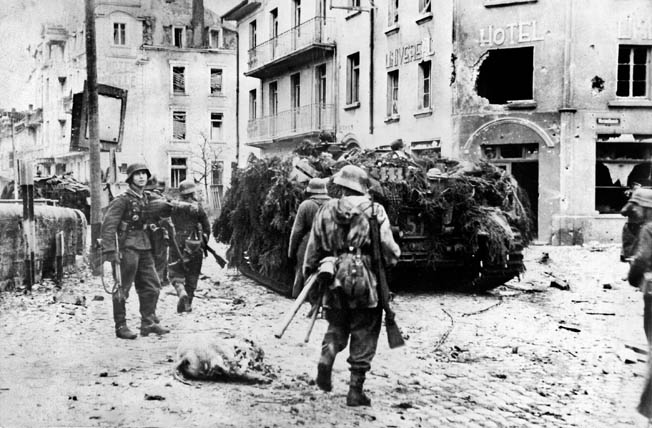
When Simpson and his staff began reviewing their new situation they were disturbed that a German enclave existed on their left flank, between Ninth Army and Lt. Gen. Miles C. Dempsey’s Second British Army. In what became known as the Geilenkirchen Salient, German forces held a threatening position that could easily be the launch point for attacks against either Ninth Army or Second Army. Simpson immediately ordered the formation of a small reserve force to counter just such a threat. Battalions from the 2nd Armored and the 29th and 30th Infantry Divisions constituted this reserve.
Ninth Army continued planning for a renewed general offensive by the Allied forces. In such an offensive Ninth Army’s role would be to protect the left flank of 12th Army Group and the right, or southern, flank of 21st Army Group. It was also to attack to reach the Rhine River, supported by the recently created XXIX Tactical Air Force commanded by Brig. Gen. Richard E. Nugent. To strengthen Ninth Army for the planned attack, XIII Corps, under the Maj. Gen. Alvan C. Gillem, Jr., was assigned to Ninth Army. It brought with it Brig. Gen. Alexander R. Bolling’s 84th Infantry Division and Maj. Gen. Frank A. Keating’s 102nd Infantry Division, both new to combat. General Gillem’s corps took over the 113th Cavalry Group positions.
Geilenkirchen was the northern end of the German defensive line known variously as the West Wall or the Siegfried Line. From Geilenkirchen, 15 miles north of Aachen, to Kleve there was only a thin, single line of scattered pillboxes backed up by natural obstacles. South of Geilenkirchen the pillboxes multiplied into definite clusters on a forward line backed up by other clusters a few hundred yards to the rear. Farther south the number of pillboxes and clusters increased markedly.
First to approach the Geilenkirchen area was the 2nd Armored Division under Maj. Gen. Ernest N. Harmon in September. The Americans were unaware that the German forces facing them were scattered and struggling to restore a torn front line. Further, they did not know that at this moment the vaunted West Wall was largely unmanned. Under orders to keep the Americans away from the West Wall, Col. Gen. Kurt Student, commanding the defending First Parachute Army, had launched counterattacks to slow the 2nd Armored Division. Nevertheless, the American armored attack all but destroyed the 176th Infantry Division defending the area and pushed the 275th Infantry Division to the south. This left a dangerous gap in the German lines, which led directly to the northern end of the West Wall at Geilenkirchen. If the village was seized it would tear a gap in the West Wall defenses that might not be repaired.
Fearing the worst, Field Marshal Walther Model, commanding the German Western Front, ordered more troops to the area. He rushed the recently reconstituted 183rd Volksgrenadier Division to the scene with orders to restore the front lines, but it arrived too late. Both the 2nd Armored Division and Maj. Gen. Leland S. Hobbs’ veteran 30th Infantry Division had already passed the positions to which the 183rd Volksgrenadier Division was directed. Although the Germans did manage to reestablish contact between the two separated sectors of their front, the Americans were within a stone’s throw of Geilenkirchen, at Teveren. The 183rd Volksgrenadier Division was ordered to man the empty pillboxes of the West Wall. An American assault seemed imminent.
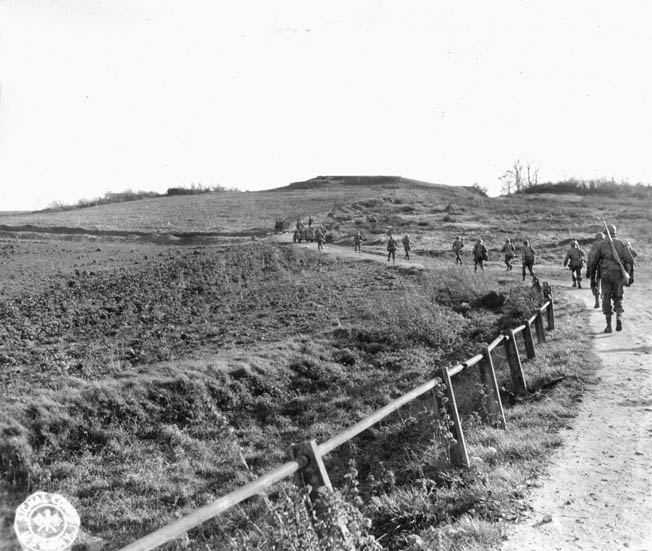
An assault was exactly what the Americans intended, but other factors began to alter plans. The XIX Corps under First Army had recently had one of its divisions transferred to Third Army. This left the corps with insufficient troops to make the attack and at the same time protect its flanks and those of First Army. Montgomery had advised Bradley that his 21st Army Group was coming into the area, but he specified that its target was the Lower Rhine between Wesel and Arnhem. In fact, Second Army had driven straight into the Netherlands after which it engaged in Operation Market-Garden, the massive airborne and ground assault designed to capture bridges over the Rhine River at Arnhem. When this failed, a gap developed between First Army and Second Army. Neither Ally had sufficient troops to close the gap.
To relieve the threat, Montgomery assigned his VIII Corps, commanded by Lt. Gen. Sir Richard N. O’Conner, to fill the hole. But like the American XIX Corps, O’Conner had only two divisions under command, an insufficient force to close the gap while continuing an advance. The result was a gap of some 112 miles that lay open to the Germans. The XIX Corps flank alone lay unprotected for more than nine miles. Although the American sector was cleared up to the British zone, nothing more could be done without additional troops. To address the open American flank, a special task force had been created to clear a strip of land lying between the Maastricht Canal and the Maas River. Commanded by Lt. Col. William M. Stokes, Jr., the 99th Infantry Battalion and a battalion of the 2nd Armored Division’s tanks, supported by artillery, engineers, and medical aid men, pushed north to close the nine-mile gap. Task Force Stokes accomplished this in three days.
Second Army, however, had stopped as planned along the Maas River and was fully engaged in the continuing Operation Market-Garden. Even with the 113th Cavalry Group maintaining contact between the First and Second Armies, the danger still existed. Planners at XIX Corps soon realized that any attack on the West Wall would leave the assault force, the 30th Infantry Division, exposed on both flanks to German counterattacks. A shortage of artillery ammunition would require additional air support, and the weather was rapidly turning bad, delaying the attack. The assault on the West Wall would require good flying weather. Several days did not meet the requirement, and the attack was postponed. Each day more and more German troops and equipment poured into the previously empty West Wall pillboxes.
German counterattacks along other sectors of the front also caused the American commanders to reconsider the attack. Apparently the German Army was not as defeated as had been previously thought. With the Brittany Campaign now concluded and more and more ports opening, additional Allied troops could be expected at the front in the near future. Accordingly, the attack on the West Wall was postponed indefinitely. On September 22, General Hodges authorized all three of his corps to go on the defensive. First Army spent its pause readjusting its lines, replenishing supplies, and preparing for a new offensive. The northern end of the West Wall in and around the village of Geilenkirchen remained securely in German hands.
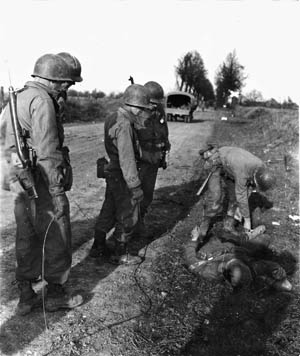
While the Germans reinforced the West Wall, the Americans adjusted their own lines. First Army then launched its attack in October. Plans remained basically unchanged. General Hobbs’ 30th Infantry Division would make the main attack on the West Wall supported by the entire 2nd Armored Division. This attack was directed against positions protecting Aachen, reportedly weaker than those farther north. To protect the Army’s dangerously exposed northern flank, Maj. Gen. Charles H. Gerhardt’s veteran 29th Infantry Division would make limited objective attacks along the northern front between Sittard and Geilenkirchen.
The 29th Infantry Division’s diversionary attack brought a swift reaction from the Germans. The original attack of two battalions was enlarged when German opposition proved strong. When two regiments of the division attacked, the German commanders became alarmed, although the Americans did not make any significant penetrations. General Hans von Obstfelder called for help from the neighboring corps, but that corps was itself struggling with the 7th Armored Division in the Peel Marshes and could offer no assistance. General Obstfelder did manage to counterattack, and in a fierce battle for the village of Schierwaldenrath wiped out an entire company of the 29th Infantry Division. Operations in the 29th area were reduced to strong patrols. Meanwhile, the 30th Infantry Division continued fighting for Aachen and the West Wall defenses surrounding it.
On October 5, Combat Command B,
2nd Armored Division cut the Aachen-Geilenkirchen highway against strong opposition. The Germans rushed tanks and antitank guns up and managed to halt the 2nd Armored the next day. Field Marshal Gerd von Rundstedt, the German commander-in-chief, West, ordered more troops rushed to the threatened sector to relieve the 343rd Infantry Regiment, 183rd Infantry Division so that the former was prepared to counterattack the 29th Infantry Division near Geilenkirchen. Sixty artillery pieces were brought up to support the attack.
But as usual at this stage of the war, movement of German units from one sector of the front to another was often delayed by Allied air, interdicted roads, and lack of transport. Before these new units could arrive to relieve the 343rd Infantry Regiment, each was absorbed into a battle near Aachen to face the continuing American general offensive. As a result, no counterattack was launched by the 183rd Volksgrenadier Division, which had all it could do to maintain its defenses by launching feeble counterattacks south of Geilenkirchen. The American attacks eventually established a strong defensive front along a railroad spur that ran east below Geilenkirchen. The American concentration on Aachen had left a salient in the lines that would have to be dealt with at some point.
Aachen was surrounded officially on October 16. The next several days were spent mopping up the remaining resistance in and around the city. As the mopping up continued, the Ninth Army moved to this front. Only XIX Corps with the 2nd Armored, 29th Infantry, and 30th Infantry Divisions held the front. General Frank Keating’s new 102nd Infantry Division was arriving. While XIX Corps could hold the front, the exposed northern flank was a concern to General Simpson, as it had been to General Hodges. The front now stretched some 17 miles from the Maas River to the West Wall at Geilenkirchen and kept a full infantry division and the 113th Cavalry Group busy patrolling to prevent a surprise German attack. As the Ninth Army moved farther east, the gap would only grow larger.
Simpson’s concerns were transmitted to General Bradley, who delayed the next offensive several days to permit new divisions, the 84th Infantry Division and the 102nd Infantry Division, to reach Ninth Army. This would also give the British time to clear the Peel Marshes, a threat to Ninth Army’s rear, and perhaps close the gap between Ninth Army and Second Army.
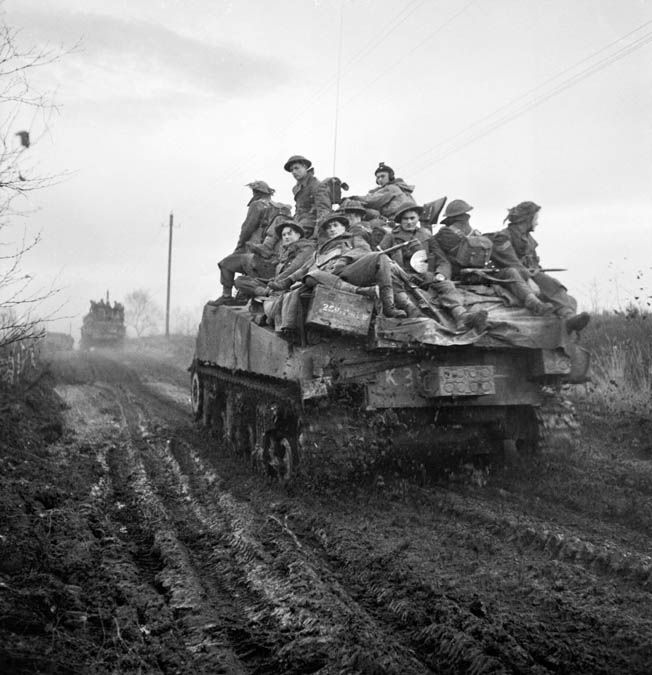
General Simpson ordered General Gillem’s new XIII Corps to take command of the 102nd Infantry Division and the 113th Cavalry Group. They were to defend the 17-mile-wide gap until the British could arrive. When they did arrive, the 7th Armored and 84th Infantry Divisions would come under command of XIII Corps, which would then attack east alongside the XIX Corps to the Rhine. But there remained one problem with Ninth Army’s plan. The village of Geilenkirchen lay on a crossroads within the West Wall defenses. Besides providing an excellent base for an enemy counterattack, it also narrowed the space available for the coming attack. Planning to seize it was difficult, since the village lay directly on the boundary between the American and British forces.
General Simpson had an answer. He asked the British for assistance. Accordingly, Lt. Gen. Brian Horrocks agreed to move up his XXX British Corps and one infantry division prior to relieving XIII Corps. The agreement placed the village of Geilenkirchen under XXX Corps and provided the 84th Infantry Division from XIII Corps to assist in clearing the village. Once cleared, General Bolling’s division would revert to XIII Corps control for the push to the Roer River.
Facing XIII Corps in the Geilenkirchern sector was the XII SS Corps under the command of General Guenther Blumentritt. It included the 176th Infantry Division and the 183rd Volksgrenadier Division. Both divisions had recently undergone major reorganizations and were stronger than the average German frontline unit. General Blumentritt was particularly worried about the 176th Infantry Division, whose exposed position invited a pincer attack by the British. As a result, he placed most of his few reserves behind that division while he positioned his artillery to fire directly on Geilenkirchen. Also at the village were 20 assault guns and several 75mm and 88mm guns. Behind the front he held the 301st Tank Battalion with 31 Mark VI Tiger tanks and the 559th Assault Gun Battalion with 21 assault guns. All of the many small villages in the area were developed into mutually supporting strongpoints. Each was surrounded by trenches, foxholes, and mines. If driven from their pillboxes, the Germans were to use the strongly built cellars of each village as secondary positions.
Simpson delayed the start of his attack on the Geilenkirchen salient until the third day of the American general offensive toward the Roer River. This was in the hope that the main attack might draw off German reserves protecting the salient. Yet, while no frontline troops were diverted, a major reserve force, the 15th Panzergrenadier Division, was in fact sent south against XIX Corps. Geilenkirchen straddles the Würm River on the Roer River plain surrounded by farming and mining villages amid endless rows of beets and cabbages that cover much of the plain. In the dismal weather conditions of November 1944, one soldier complained, “The Geilenkirchen area was not one of Germany’s more attractive places.”
Operation Clipper, as the battle for Geilenkirchen was known to the Ninth Army, had four phases. The 84th Infantry Division was to make the main effort, passing through the 102nd Infantry Division and seizing the high ground east of Geilenkirchen and Prummern. The following day the 43rd British Infantry Division was to take the high ground around Bauchem and Tripsrath, villages to the west and south of Geilenkirchen. This would encircle the town. Then General Bolling’s men would attack the town itself toward Sueggerath and the Würm valley. In the last phase, the 43rd Infantry Division was to clear the west bank of the Würm River to Hoven, three miles north of Geilenkirchen. Upon completion of these phases, the Geilenkirchen salient would be eliminated. Protecting the corps’ northern flank was Task Force Biddle, the 113th Cavalry Group reinforced by tanks and artillery under Colonel William S. Biddle, commander of the cavalry group.
General Bolling’s 84th Infantry Division was new to combat and had only two of its three infantry regiments available. The third was detached to XIX Corps in the south. It was, however, reinforced by a British unit called Drewforce, consisting of two troops of flail (mine-clearing) tanks and a troop of the 357th Searchlight Battery, Royal Artillery. The four giant searchlights provided “artificial moonlight” by reflecting their lights off the low clouds, allowing tanks and infantry to advance after dark. Also available were two battalions of XIII Corps artillery. To begin his assault, Bolling selected Colonel John S. Roosma’s 334th Infantry Regiment.
November 18, 1944, dawned cold, wet, and gray. The 334th Infantry moved to the attack at 7 am, its objective the village of Prummern. Five and a half hours later the 43rd (Wessex) Division would assault the villages of Tripsrath and Bauchem. The 333rd Infantry Regiment would strike the next day to clear the valley southwest of Geilenkirchen. Before the attack was launched, things did not go well. The neighboring 2nd Armored Division had a slow start, and intelligence reports indicated that the 9th Panzer Division was concentrating for a counterattack near Geilenkirchen. General Bolling hoped “to beat the Germans to the punch.”
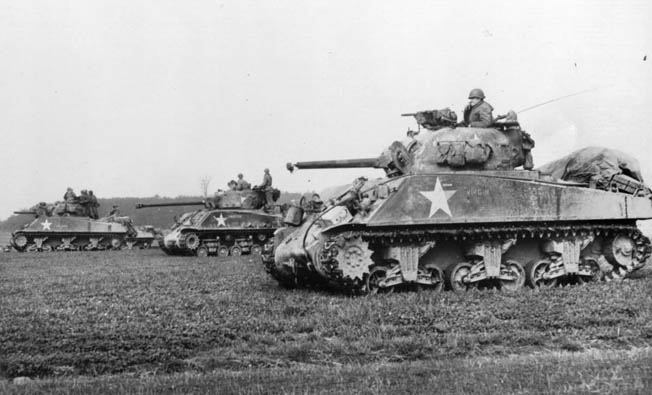
A patrol from the 334th Infantry had found two gaps in the minefields protecting the villages. These openings had been mined by the Americans to confuse the Germans. Now those mines were lifted, and the American troops used the lanes to advance. Drewforce widened the gaps to allow tanks and other vehicles to use them as well. The 309th Engineer Combat Battalion completed the job. Lt. Col. Lloyd H. Gomes, commanding the 1st Battalion, ordered his men forward in a column of companies. Each group had a designated objective, groups of pillboxes. Supported by British tanks from the Sherwood Rangers Yeomanry Regiment, the men moved forward until the enemy opened fire. German artillery and mortars caused the first casualties. Nevertheless, the Americans raced forward and were soon engaged in hand-to-hand combat with the defenders. Most of the enemy, however, did not relish close-in fighting and surrendered.
The Americans soon developed a process for knocking out pillboxes. Tanks and heavy weapons opened fire on a pillbox. The enemy defenders ducked and closed any openings that might allow enemy fire to enter. While doing so they were blind to what was happening outside. The Americans crawled up to each pillbox in turn and dropped smoke grenades into the ventilators. As many as 45 enemy troops would come out of the surrendered positions. It became a platoon fight. Rarely was a full infantry company engaged in taking a pillbox. The enemy artillery often came late, so the leading platoons escaped its fire but follow-up forces were often hit by it.
In fact, the 1st Platoon of Company B soon found itself 1,000 yards ahead of the rest of the battalion. Overlooking the village of Prummern, they decided it was too dangerous to attack alone, so they dug in and waited. Soon Companies B and C arrived. Colonel Gomes did not waste any time. Soon the battalion was entering Prummern. Machine-gun and sniper fire came from the houses. The Americans moved through the town, taking prisoners and clearing out cellars. Some enemy strongpoints remained on the other side of the village, but Prummern was in American hands by midafternoon.
While Prummern was falling to the 1st Battalion, the 2nd Battalion was clearing the high ground between that village and Geilenkirchen. Although the mud slowed the supporting tanks, the advance continued, and the hill was taken by 9 am. A second hill fell in midafternoon. British intelligence officers reported a large column of 4,500 enemy troops with tanks and other vehicles that appeared to be heading toward Geilenkirchen. Later it was determined that this was the 15th Panzergrenadier Division heading south. Both battalions dug in for the night.
The attack had struck at the 343rd Infantry Regiment of the 183rd Volksgrenadier Division. These Russian front veterans had sent a company each to Prummern and Geilenkirchen. Now the 2nd Company had been lost in Prummern. But these veterans knew how to fight, and they soon showed it. As a 1st Battalion patrol explored a way to the next day’s objective, they discovered six enemy tanks just north of Prummern and moving toward the town. Soon after the patrol reported the advance, German artillery opened fire. The tanks fired down the streets of the town. “The place was bedlam,” reported one soldier. “Shells exploding, houses burning, flashes streaking.” Two companies of the 10th Panzergrenadier Regiment and the 2nd Battalion, 33rd Tank Regiment struck Purmmern hard.
Prummern became a no-man’s land. The fight continued all night long . Americans were surrounded by Germans and vice versa. But daylight brought a clarification. Purmmern remained in American hands, although individual Germans still roamed the alleys and stables. To finally clear the town, the 3rd Battalion, 334th Infantry came up and did the job—or so it seemed. As the battalion moved out of town to seize the next objective, Mahogany Hill, their advance was halted by a company of German infantry that had set up on the edge of town. Once again fierce fighting resulted in hand-to-hand encounters. British flamethrowing tanks came up and cleared the village, knocking out two German tanks, but the enemy still held the northern edge of the village. The 334th Infantry had achieved its objective at a cost of 10 killed and 180 wounded. More than 330 enemy prisoners had been sent to the rear.
The attack continued throughout the night of November 18-19, illuminated by the British searchlight batteries. Hill 101 was seized with little difficulty. But because of the continuing resistance in Prummern, the 2nd Battalion, 334th Infantry could not launch an attack on Mahogany Hill. It began to appear to General Bolling that the real danger was to the east between Prummern and the positions held by the 2nd Armored Division a mile and a half south at Apweiler. He reported, “Our flank is sort of out in the breeze now,” to Ninth Army. He later elaborated, “Our chief concern … is our right flank. The 2nd Armored Division has advanced only to Immendord-Apweiler. I have pushed a salient up the river valley and they [2nd Armored] haven’t advanced.”
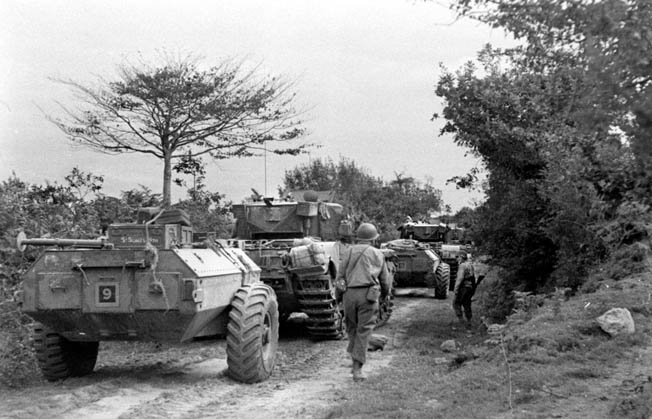
General Bolling was aware that the 2nd Armored Division was stalled. It had been counterattacked in strength by the 9th Panzer Division. Further, one of its main supply routes through Setterich was still closed. Appreciating Bolling’s concerns, Generals Simpson and Gillem ordered up the 405th Infantry Regiment, 102nd Infantry Division.
The following day Mahogany Hill fell to the 3rd Battalion. Fighting was heavy but supported by artillery and British tanks. Meanwhile, the 1st Battalion, 333rd Infantry Regiment moved on Geilenkirchen soon after the German counterattack on Prummern was defeated. Pleased with the success thus far, General Horrocks ordered General Gillem to combine phases three and four into one attack. On November 19, XIII Corps was to seize Geilenkirchen, Sueggerath, Müellendorf, Würm, and Beeck. Concerned about the increased objective as well as strong enemy defenses, Gillem ordered the 102nd Infantry Division to prepare to support the attack with another regiment.
Colonel Timothy A. Pedley, Jr.’s 333rd Infantry now had to take Geilenkirchen, Sueggerath, Müellendorf, and Würm. Using the Würm River, which divided Geilenkirchen, as a separating line the 1st Battalion assigned sectors to the assault companies. Supported by British tanks and the 325th Field Artillery Battalion, the attack began early on November 19 and moved rapidly. The first casualties came from mines, but the advance continued and the battalion’s Company B reached the center of town by 9 am. Without pause, they headed out for Suggerath, a mile farther. Communications with Company A were lost early in the advance, but the sounds of heavy combat came from across the river.
It was midafternoon when the first heavy fire came against Company B. Mortars hit the company as it was crossing the open ground between the villages, but the Americans pressed forward and reached the outskirts of Suggerath by 3 pm. Lt. Col. Thomas W. Woodyard, Jr., who had been forward with B Company, called up the British tanks and his reserve Company C and ordered the combined force into Suggerath. They entered a burning village infested with snipers. In an intense fight the village was cleared by 5 pm. By dark both Geilenkirchen and Suggerath had been captured. Mopping up continued and would go on for the next two days as more and more hidden Germans appeared from the deep cellars of both villages.
High ground between Suggerath and Müllendorf presented a threat to the battalion. Colonel Woodyard took six men and led a patrol to the high ground. One man disappeared in the darkness, but the remaining men went on. One of the survivors later reported, “We were ambushed. They jumped us. There were six or seven Jerries on both sides of us. There was a machine gun ahead of us. We couldn’t use the radio. We got all tied up in some telephone wires and couldn’t swing ourselves free. One Jerry stood right up on the [railroad] tracks with a Tommy gun. He was probably lying between the tracks. He hit one man in the throat. Some of our boys fired back and I think got a couple of them.”
As the fight continued, an enemy grenade wounded Colonel Woodyard in the arm. Crawling back to Company C, he ordered it forward to relieve the patrol. The resulting fight ended with the Americans in control of the high ground.
Across the river, Company A faced a much stronger initial defense. They had to cross a gravel pit, then a minefield 30 yards wide protected by entrenchments and wire. A fortified sports plaza protected the town. The regimental mine platoon cleared a path through the minefield without loss. The company crossed the gravel pit with no trouble other than a hard climb up an embankment. Strangely, the sports plaza remained quiet during their advance. It turned out that it was undefended.
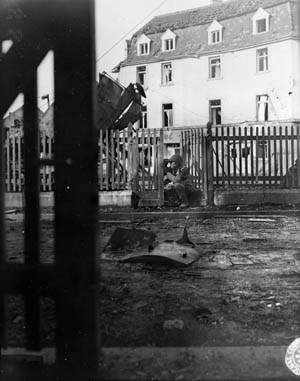
Company A now came to the first houses. Geilenkirchen was larger on this side of the river. Moving along a railroad track the company immediately found itself in a house-to-house fight for their section of the town. The battle opened with a German soldier waving a white cloth, indicating he wished to surrender. Three men of Company A looked up and motioned him to come over. As they did, another German soldier in the same house opened fire with an automatic weapon. The Americans fired at the house until it was full of holes.
Mortars held up the advance. When it resumed every house was an enemy defensive position. It was literally a house-to-house fight. Tunnels ran from one cellar to the next, so the Germans could advance or retreat at their pleasure. Another hour was lost in clearing the first few houses. Then, at about 10 am, a British lieutenant appeared and asked one of the platoon leaders how he could help. He volunteered to blast the houses if the Americans would spot them for him. Two Sherwood Ranger tanks drove up, moved into the street, and began firing as directed by the American soldiers. At one pillbox, the British tank drove up, stuck its main gun through the firing port, and blasted away. The German defenders began to surrender or retreat. Four hours after Company B had cleared their sector, Company A had secured its section of town.
Like Company B, Company A then faced another heavily defended area outside of town. They fought against enemy artillery, three fortified houses, and a thick wood that supposedly held a company of German troops. By dark the Americans had cleared the houses and entered the wood to find no Germans but plenty of abandoned equipment. Later that night a British patrol appeared and congratulated the company on repelling a strong German counterattack, of which the Americans knew nothing. The British explained that they had been hit by three Tiger tanks and a German infantry company but the attack was halted when Company A attacked the wood, threatening the Germans’ flank. The following morning 78 German officers and men surrendered to the Americans approaching from behind them. They had hidden in the wood throughout the night.
Key to the success of the attack was the excellent teamwork between the British tankers and the American infantry. The former were veterans, while the Americans were in their first battle, yet they worked well together. Each soon learned to respect the other. First Lieutenant Kenneth L. Ayres of Company A, 333rd Infantry said, “I was sold on the British. Those boys were good. There’s not a man in my company who will say there’s anything wrong with a British soldier because of the support we got from those tankers.”
November 21 saw heavy rains fall on the battlefield. Knowing the roads were mined, the British tanks tried to cross the muddy fields with mixed success. The infantry was also slowed down significantly by the thick mud. Lt. Col. William S. Barret’s 3rd Battalion, 333rd Infantry tried time and again to capture Müellendorf and Würm, without success. In desperation he radioed, “Tell Colonel Predley that these men are fighting and dying up here. No one is lying down. But we gotta have power to do this thing.”
Once again that power came from British flamethrowing tanks, which came up and with infantry protection eliminated the pillboxes that had stopped 3rd Battalion, 333rd Infantry. The final objective, Müllendorf, lay another half-mile distant. The tanks, hauling their heavy fuel trailers, could not cross the mud flats leading to the village. The infantry tried alone, only to have one platoon enter the town and disappear. Across the Würm River the 43rd Division also found enemy opposition stiffening and was denied its objectives. A battalion of the 334th Infantry tried to take Beeck, only to be repulsed as well. Intelligence now reported that the remaining defenses of the Geilenkirchen salient were held by elements of the crack 15th Panzergrenadier Division fighting from fixed defenses after their counterattack against XIX Corps had failed.
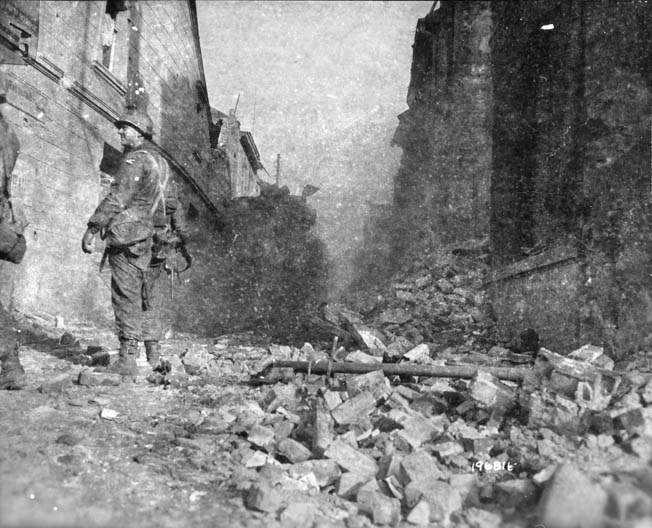
It now fell to Colonel Laurin L. Williams’ 405th Infantry Regiment, 102nd Division to try to finish the job of clearing the Geilenkirchen salient. The plan was for the 1st Battalion, 405th Infantry to bypass the town of Beeck to the east and seize the high ground north of the village. The regiment’s 2nd Battalion would attack the town frontally. At the same time, the 334th Infantry would attack from Prummern toward Beeck. The assault was set for November 21.
The 1st Battalion, 405th Infantry advanced north of Apweiler and became pinned down by heavy machine-gun fire. It took an hour to knock out some of the guns, but others kept up the fire. After American mortars opened fire the rest of the guns were silenced, and the advance continued in a heavy rain. So muddy was the ground that the infantrymen had to stop every once in a while to clean their weapons. Companies B and C joined forces on a bluff southeast of Beeck and dug in, awaiting the rest of the assault force. But they waited in vain. The 84th Infantry Division could not close the gap. Worse, heavy fire from across the Würm River prevented tank support. The 2nd Battalion, 405th Infantry was pinned down in front of Beeck.
Observers reported an enemy armored counterattack organizing in Beeck. Supplies were brought up by hand after a light tank trying to supply the forward companies was knocked out. The only concrete support Companies B and C could count on was that of the 379th Field Artillery Battalion. Their fire eliminated the pending counterattack.
The following morning the battalion attacked, only to discover enemy tanks in their path. The companies were soon isolated with Germans behind them. By midafternoon the enemy pressed the American perimeter. Calls for artillery support became more urgent. A heavy XIII Corps artillery barrage stopped the enemy attack. Since the companies could not advance and no support was able to reach them, it was decided that they would withdraw, ending the Geilenkirchen salient battle.
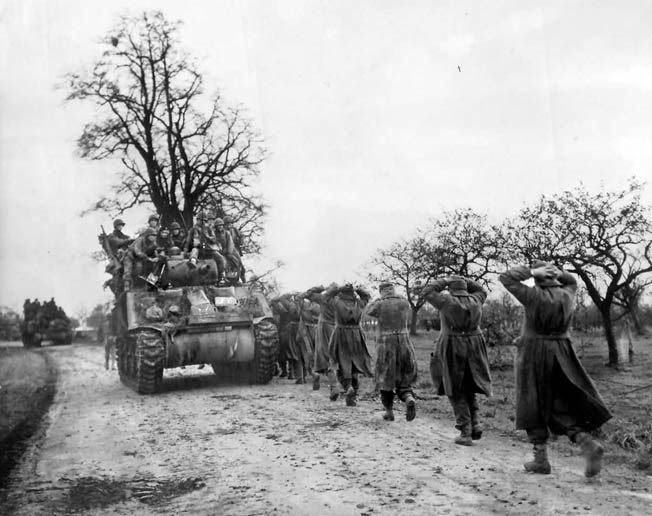
The efforts of the 84th Infantry Division and 102nd Infantry Division had in fact achieved the main objectives of Operation Clipper, removing the threat of a counterattack on the flank of XIII Corps and clearing enough area for the Ninth Army to assemble and launch its major offensive to the Roer River. Both of these had been achieved with the capture of Geilenkirchen, Prummern, and the other fortified villages in the area.
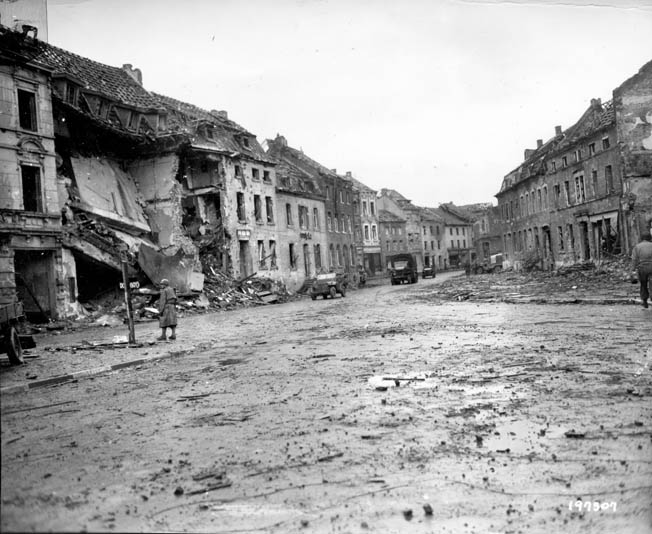
On November 23, General Gillem ordered the 84th Infantry Division to assume the defensive. Eventually, the 113th Cavalry Group would take over responsibility for the zone while the infantry divisions moved into position for Ninth Army’s major offensive, Operation Grenade, to reach the Roer. The Geilenkirchen salient was no more.
Nathan N. Prefer is the author of several books and articles on World War II. His latest book is titled Leyte 1944, The Soldier’s Battle. He received his Ph.D. in Military History from the City University of New York and is a former Marine Corps Reservist. Dr. Prefer is now retired and resides in Fort Myers, Florida.
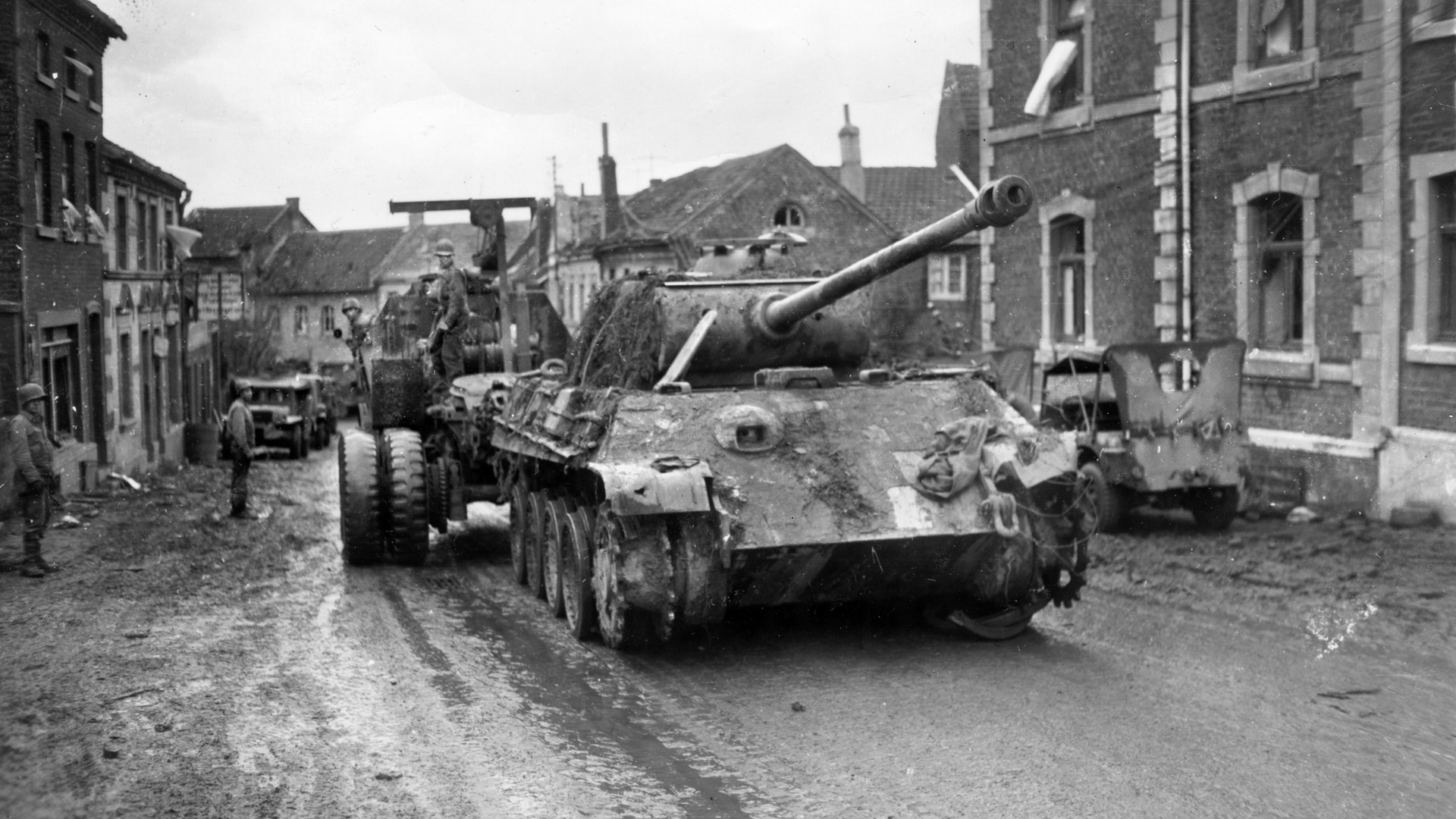
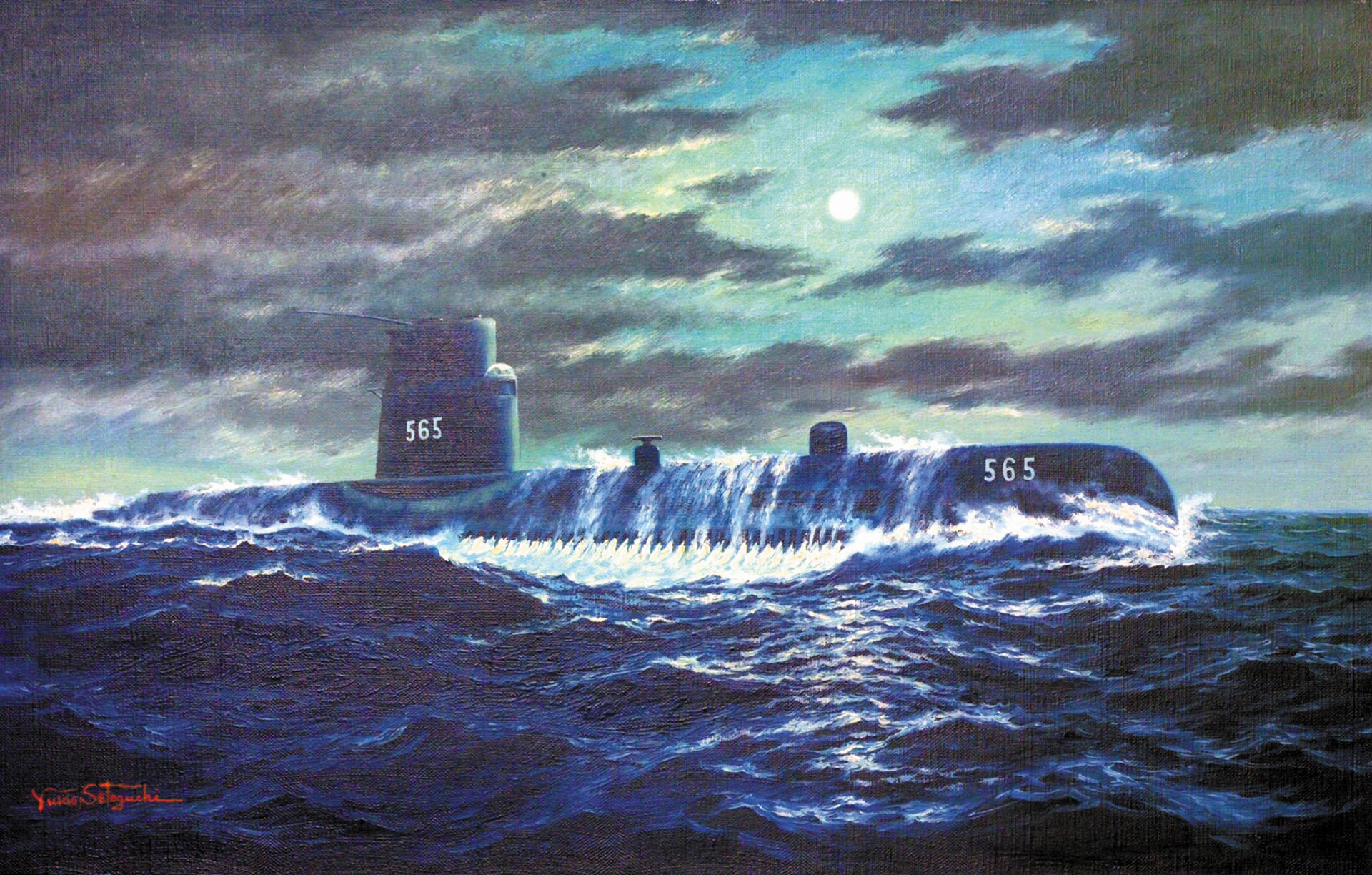
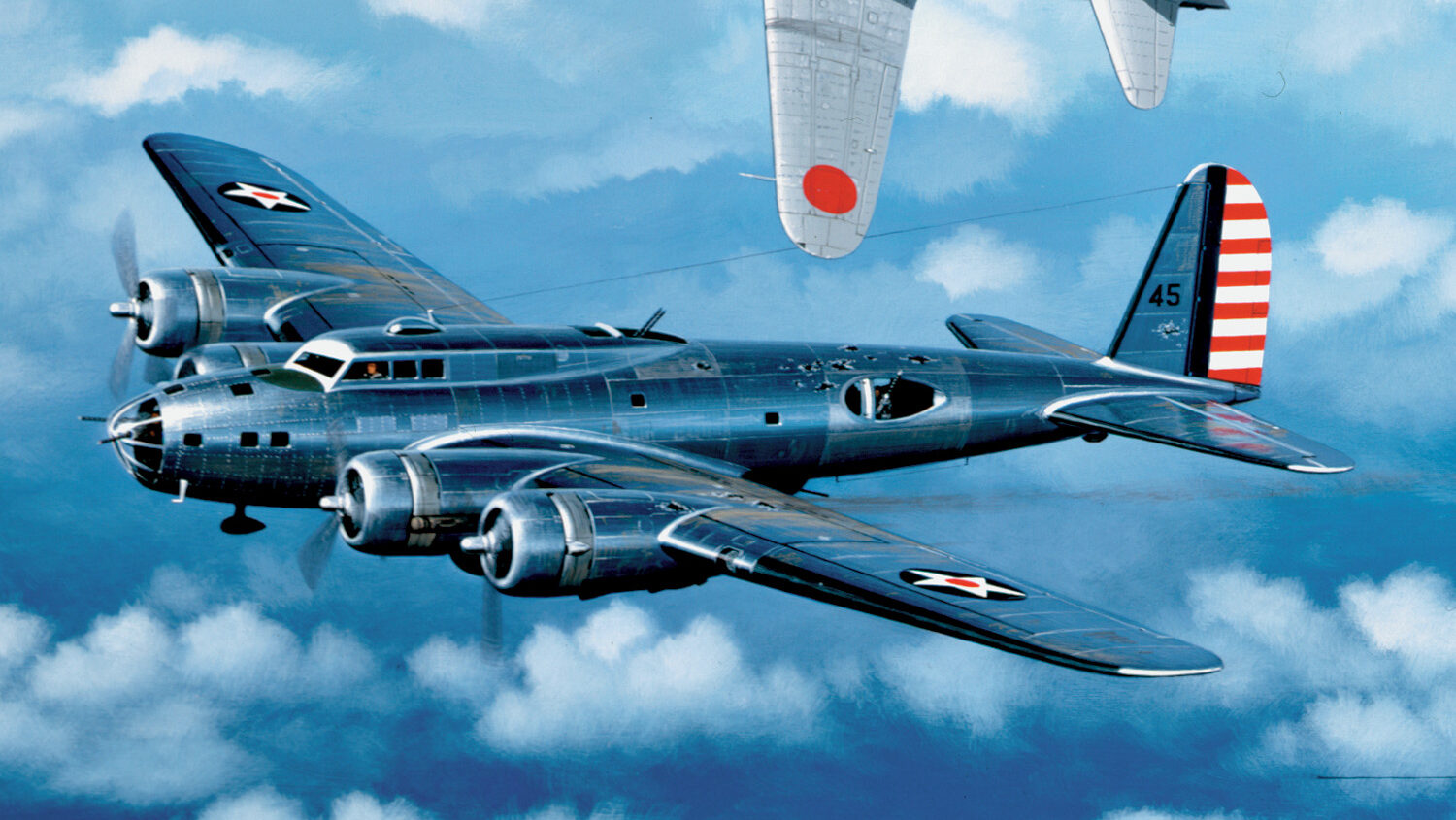
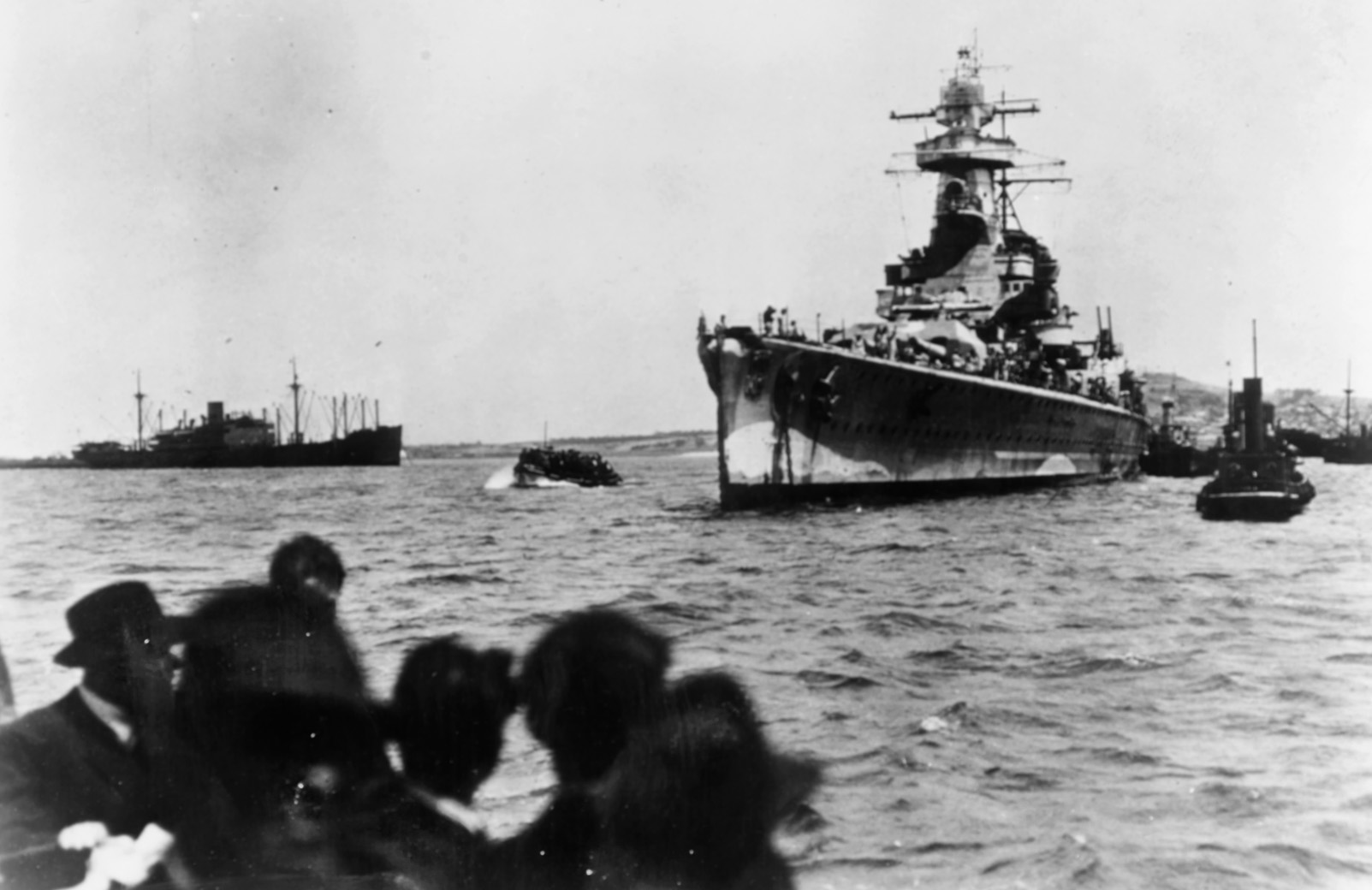
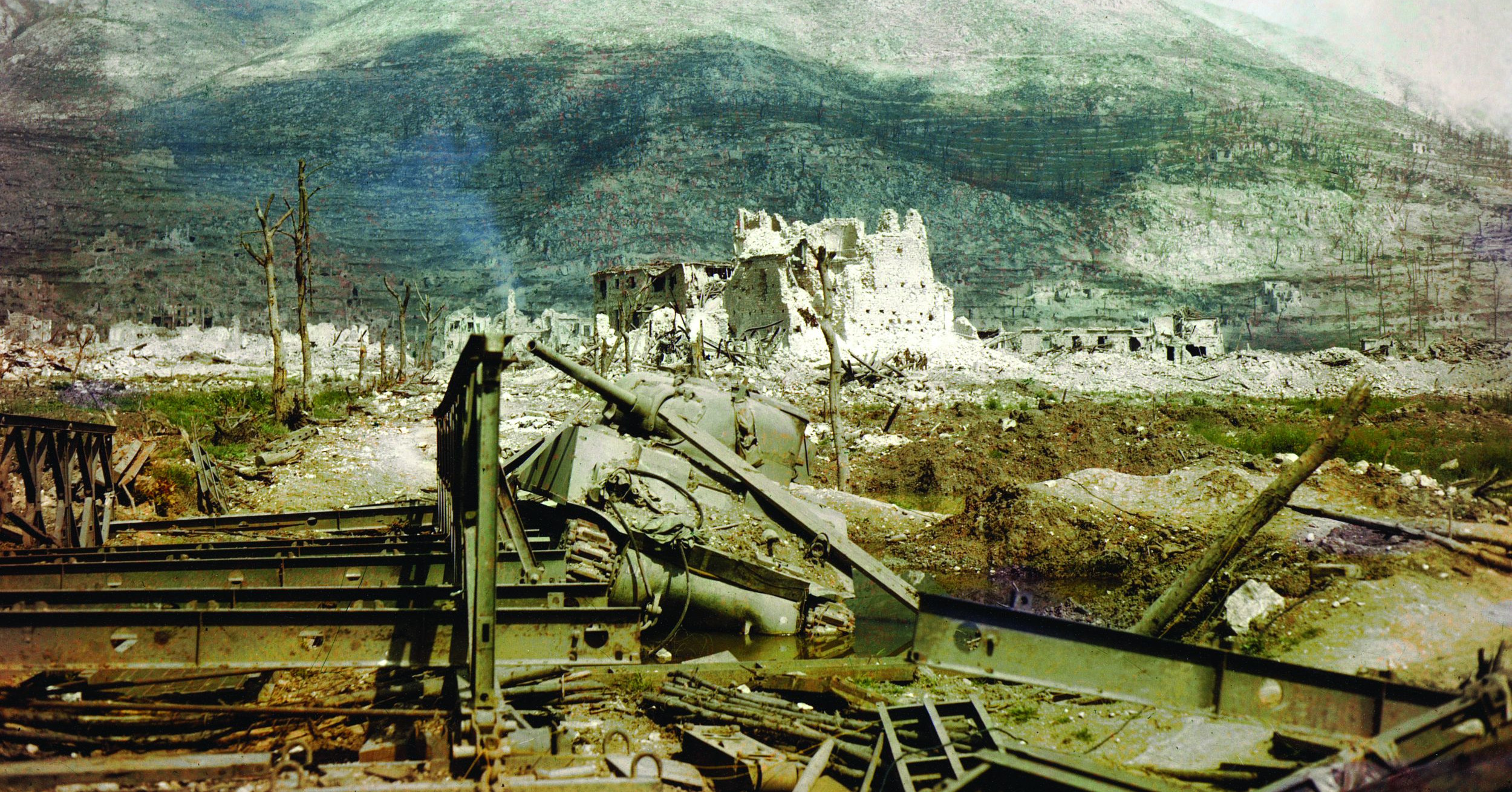
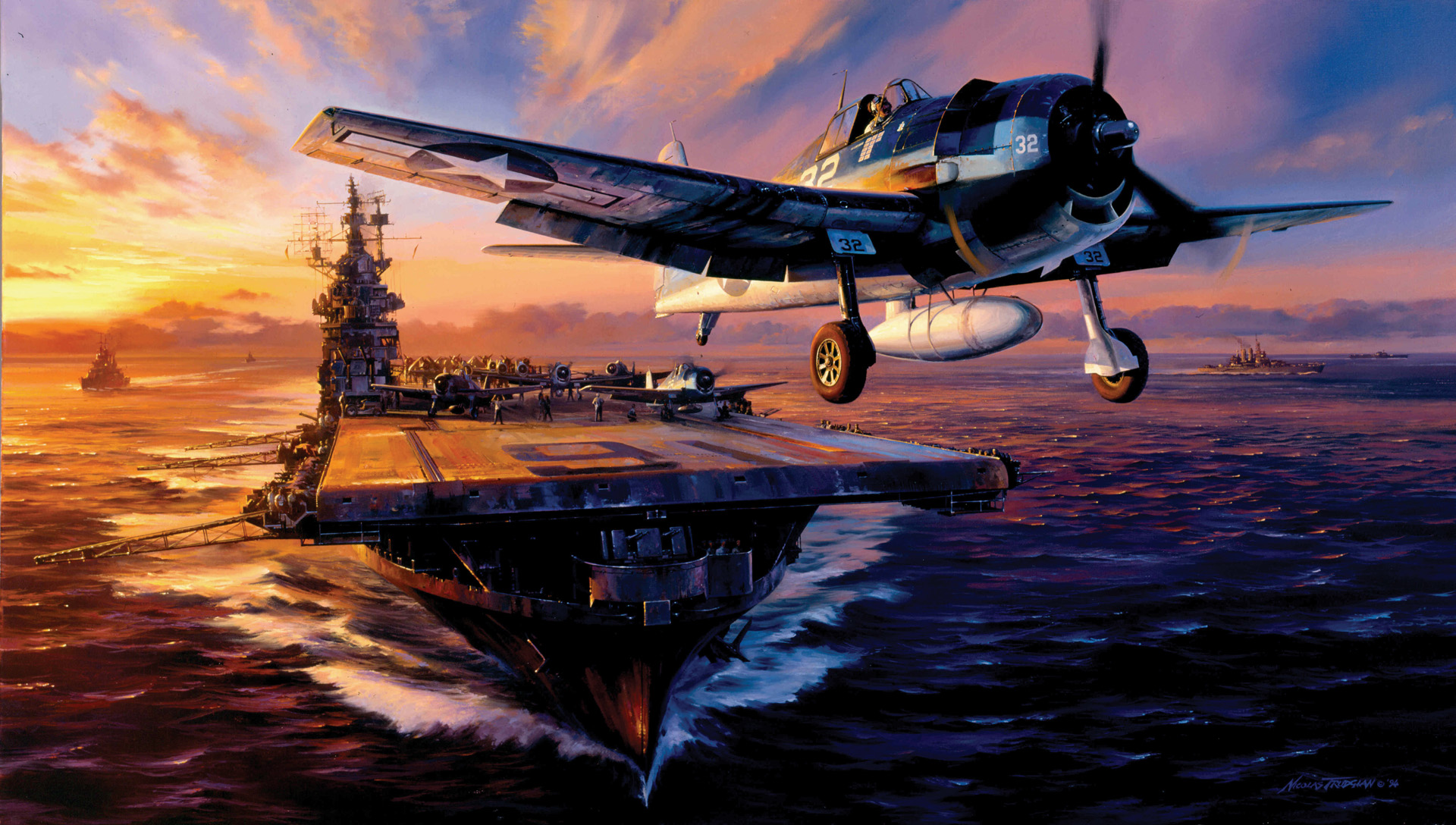
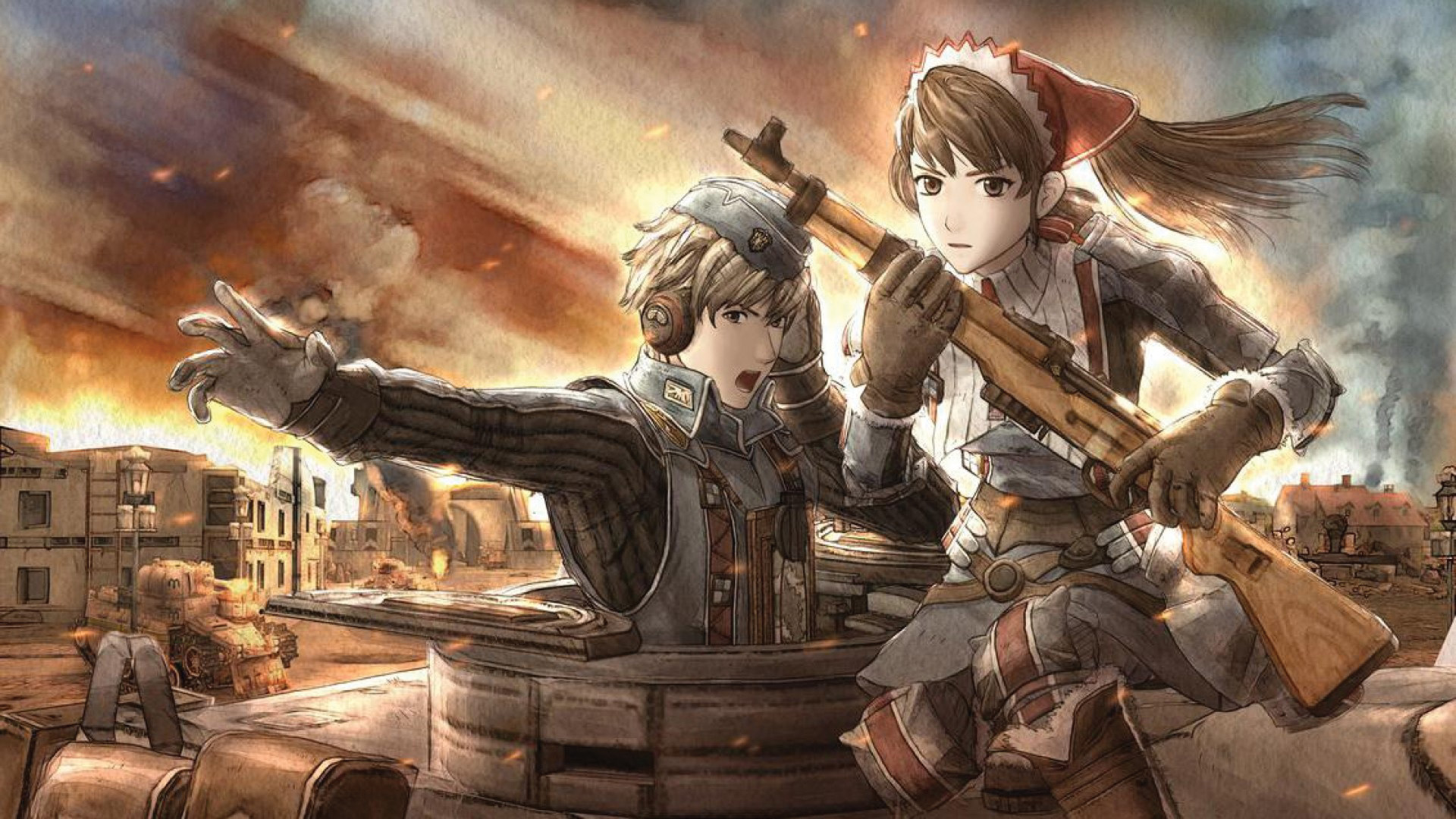
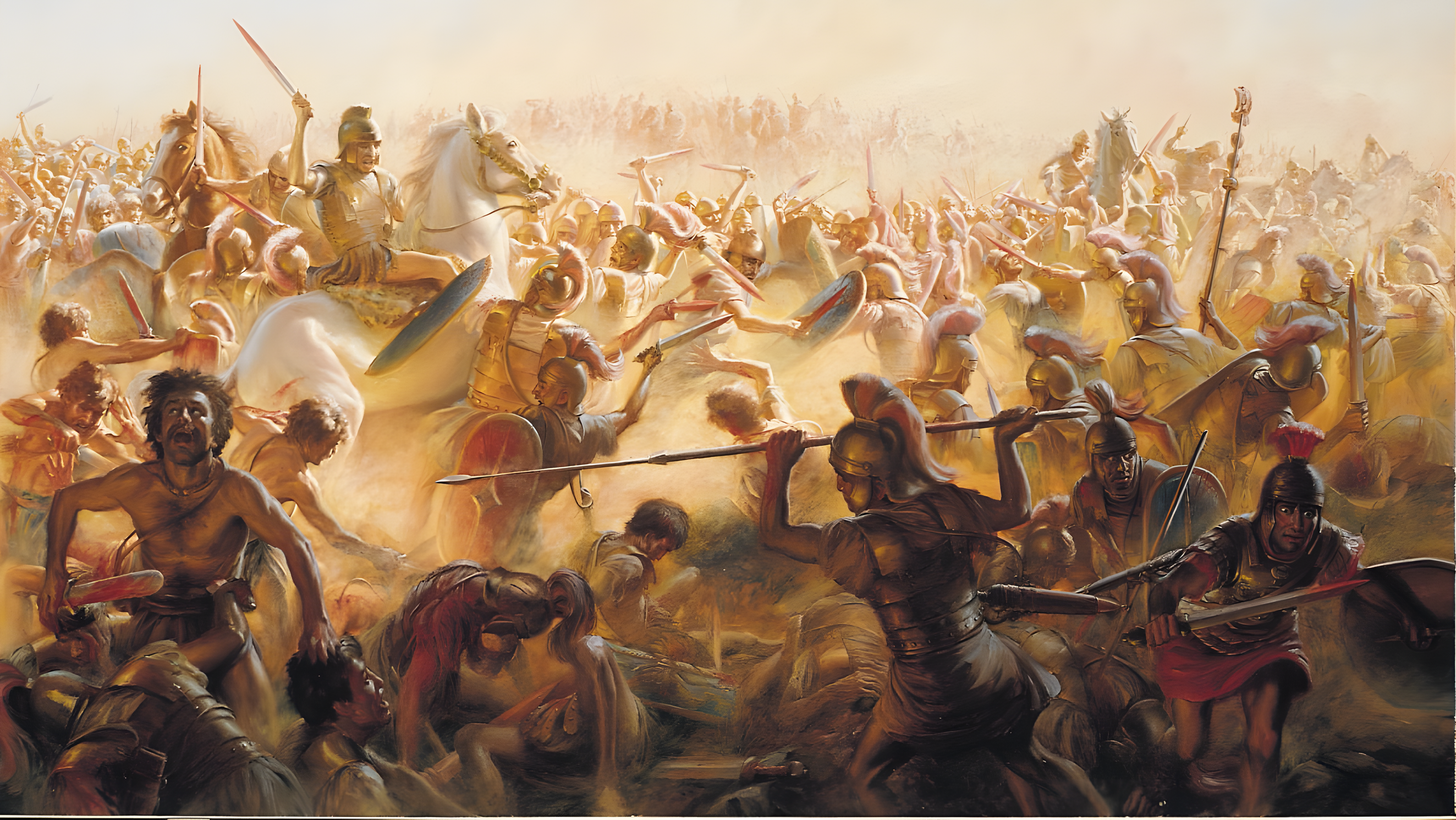
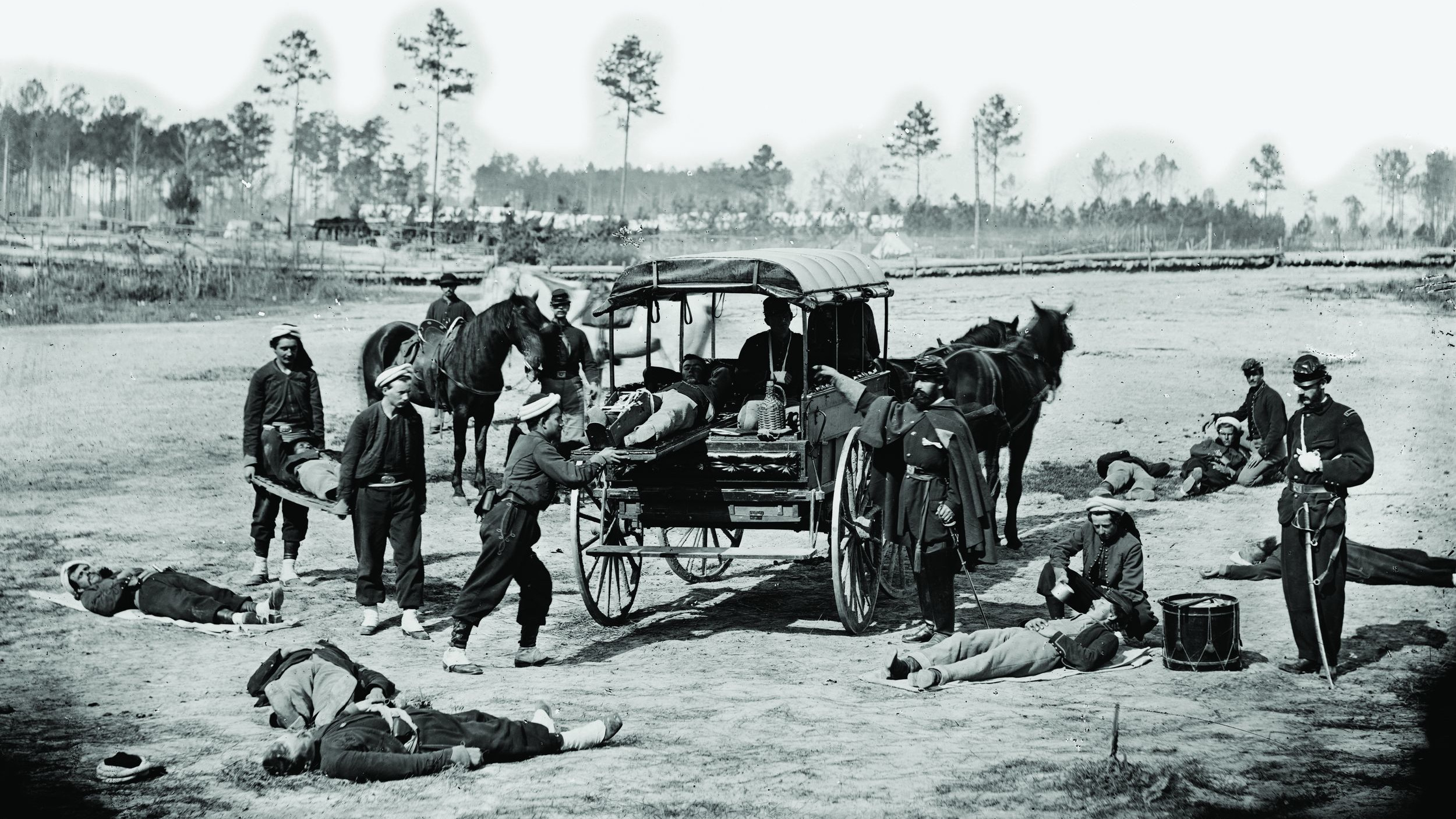
Enjoyed the article; however, the 335th Regiment was involved in the attacks on Beeck and Leiffarth (near the SportsPlatz). See We Were the Line (335-G company history).
I don’t know how old your post is. But I appreciate you pointing out the involvement of the 335th regiment and also referencing the book We Were the Line. My dad is mentioned on page 81 of that book. His name was Joseph B. Potter, Jr. He was wounded by a German sniper on 9 December 1944. That was the end of the war for him.
I wonder if either your dad or grandpa was in company G. I would be interested to know.
Thank You
Rick Potter